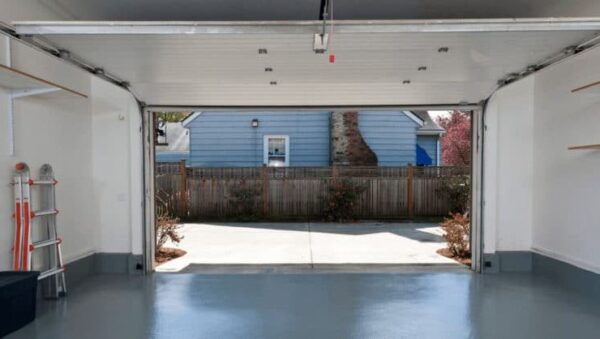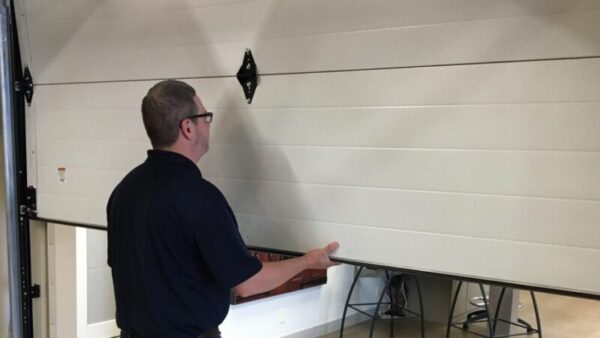Introduction
Garage doors are essential components of our homes, providing security and convenience. A smoothly operating garage door not only ensures safety but also adds to the overall aesthetic appeal of your house. One of the key factors that determine the functionality of a garage door is its balance. An imbalanced garage door can be noisy, difficult to operate, and may cause safety hazards. In this comprehensive guide, we will explore the importance of garage door balance and provide valuable tips and tricks to maintain it for a seamless operation.
Understanding the Importance of Garage Door Balance
A balanced garage door is crucial for several reasons:
- Safety: An imbalanced door can suddenly fall, posing a significant risk to anyone nearby, especially children or pets.
- Smooth Operation: A well-balanced door operates smoothly, reducing strain on the garage door opener and other components.
- Durability: Proper balance ensures that all parts of the door wear out evenly, prolonging the lifespan of the entire system.
- Reduced Noise: Balanced doors operate quietly, preventing unnecessary noise disturbances, especially if the garage is attached to the house.
Signs of an Imbalanced Garage Door
Before delving into the tips and tricks, it’s important to recognize the signs of an imbalanced garage door:
- Difficulty in Opening and Closing: If you notice that your garage door is harder to open or close than usual, it might be out of balance.
- Uneven Movement: An imbalanced door may move unevenly, jerking or shaking as it opens or closes.
- Loud Noises: A noisy garage door, especially grinding or scraping sounds, could indicate an imbalance issue.
- Visible Gaps: Check for uneven gaps between the garage door and the floor or the door frame, indicating an imbalance.
Tips and Tricks for Maintaining Garage Door Balance
Regular Inspection:
- Visual Inspection: Periodically inspect the garage door for any signs of wear, tear, or damage. Look for misaligned tracks, broken springs, or loose cables.
- Balance Test: Disconnect the garage door opener and manually operate the door. If it stays in place when partially opened, it is likely balanced. If not, it needs adjustment.
Proper Installation and Maintenance:
- Professional Installation: Ensure your garage door is installed by professionals. Proper installation plays a significant role in maintaining balance.
- Regular Maintenance: Schedule regular maintenance checks with a professional technician. They can identify and fix balance issues before they escalate.
Balancing Techniques:
- Spring Adjustment: Garage door springs are responsible for counterbalancing the weight of the door. Adjusting the tension of the springs can help achieve balance. However, spring adjustment can be dangerous and should be done by professionals.
- Track Alignment: Misaligned tracks can cause imbalance. Inspect the tracks and ensure they are properly aligned. Use a level to check their alignment and adjust if necessary.
- Cable Inspection: Cables play a crucial role in balancing the door. Inspect them for fraying, rust, or wear. If you notice any issues, contact a professional for repairs or replacements.
DIY Tips:
- Lubrication: Regularly lubricate all moving parts, including rollers, hinges, springs, and tracks. Proper lubrication reduces friction, allowing the door to operate smoothly.
- Tighten Loose Components: Check for loose nuts, bolts, or screws in the door and its hardware. Tighten them to prevent imbalances caused by wobbling components.
- Weight Balance: If you have a multi-panel garage door, ensure that all panels are of equal weight. Imbalanced panels can strain the opener and cause operational issues.
Preventive Measures:
- Weather Stripping: Proper weather stripping at the bottom of the garage door prevents water and debris from entering. It also ensures that the door maintains a proper seal, aiding in its balance.
- Regular Painting and Sealing: Wooden garage doors should be regularly painted and sealed to prevent moisture absorption. Moisture can make the door heavy and unbalanced over time.
Conclusion
Maintaining the balance of your garage door is essential for its smooth operation, longevity, and the safety of your family. By following these tips and tricks, you can ensure that your garage door remains balanced and functions efficiently. Remember, while some maintenance tasks can be done as DIY projects, it’s always best to consult professionals for complex issues, especially those involving spring adjustments or major repairs. With regular care and attention, your garage door will continue to serve its purpose effectively, providing security and convenience for years to come.





